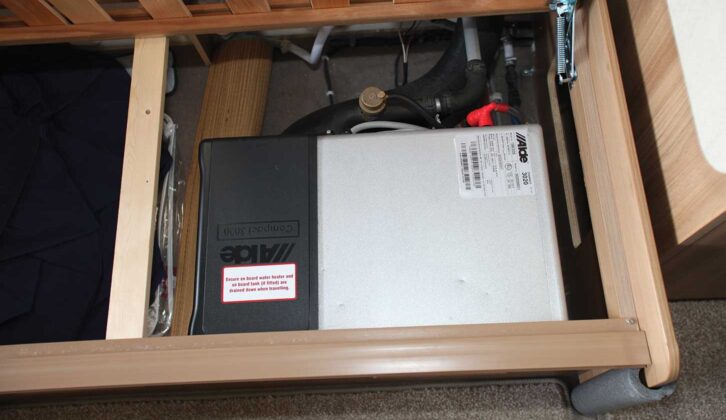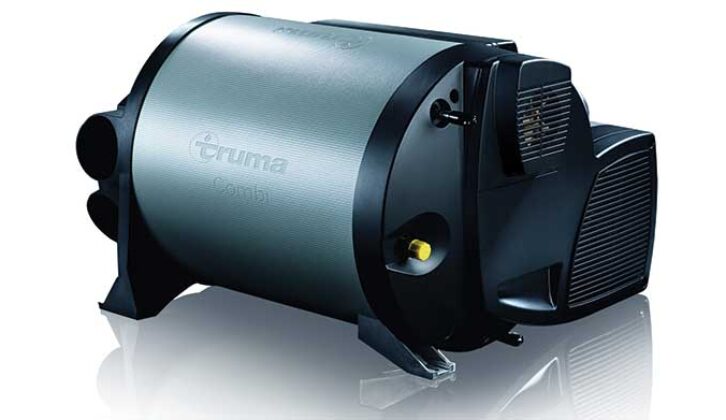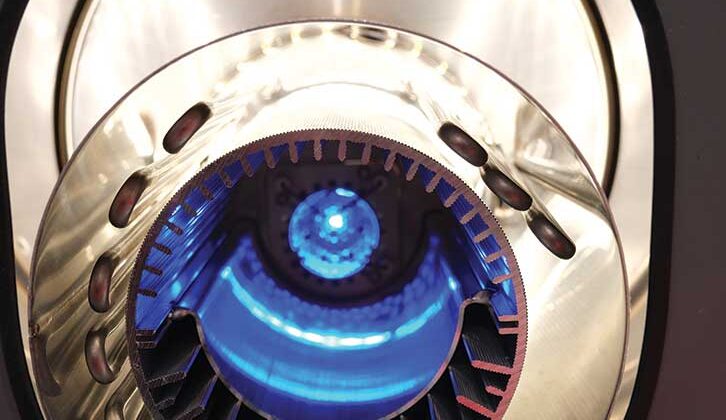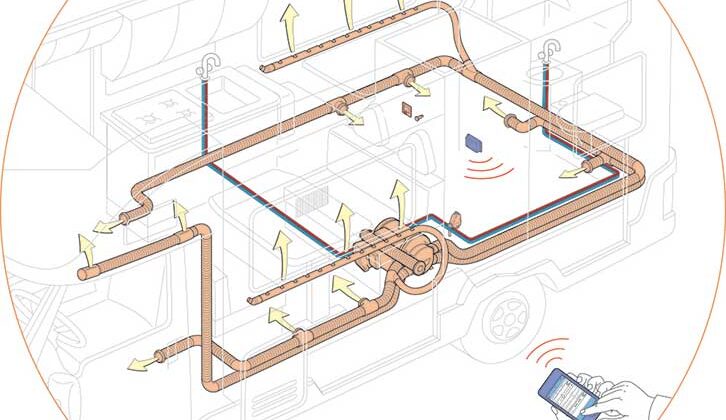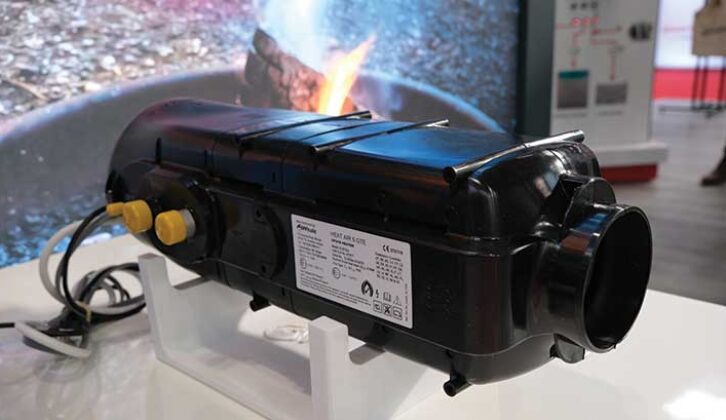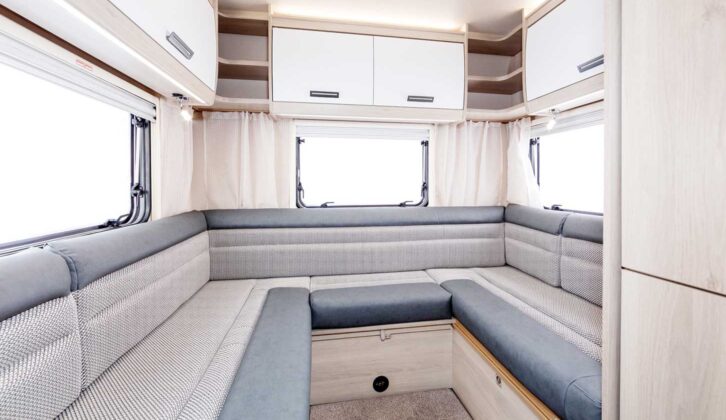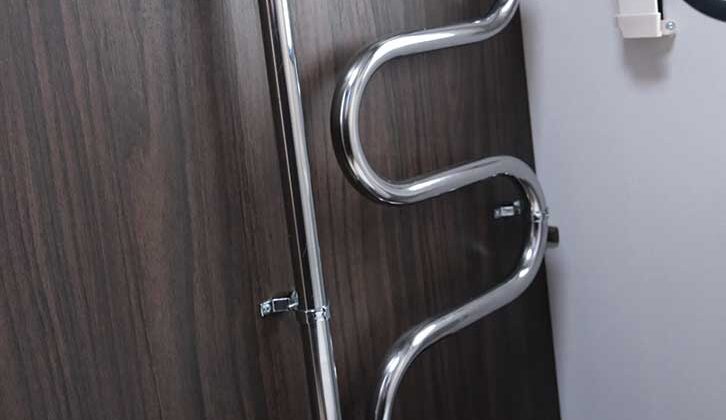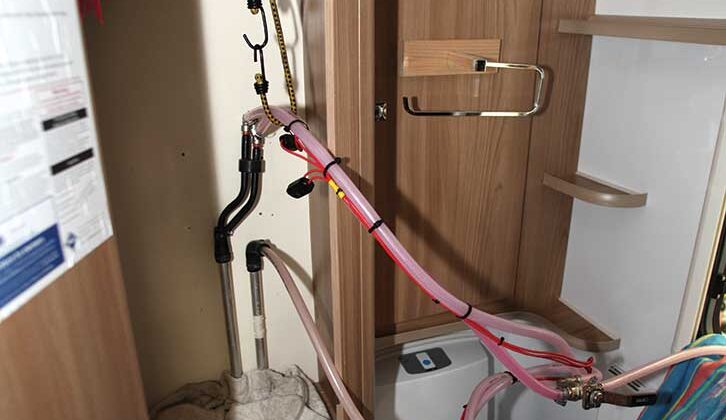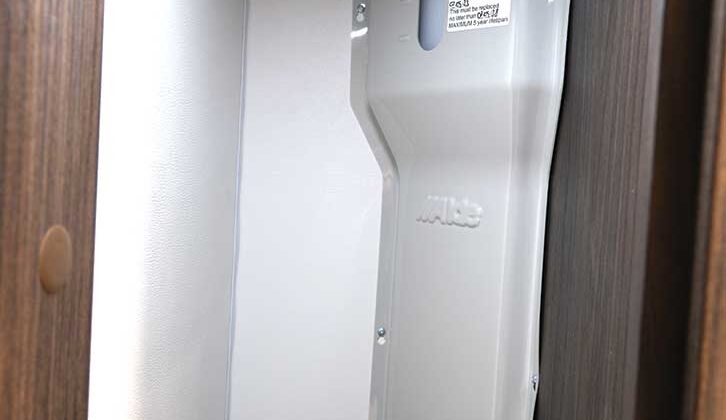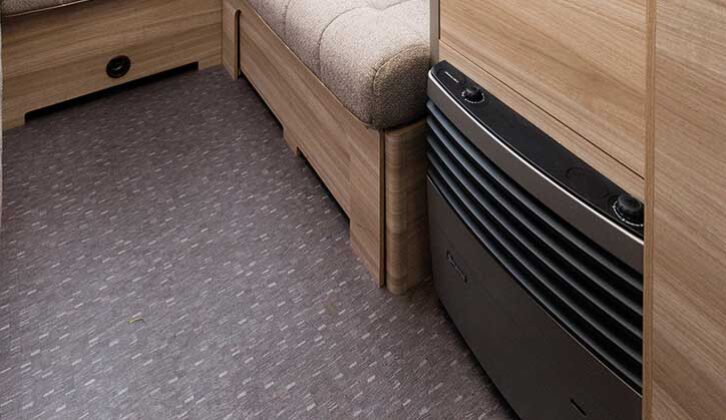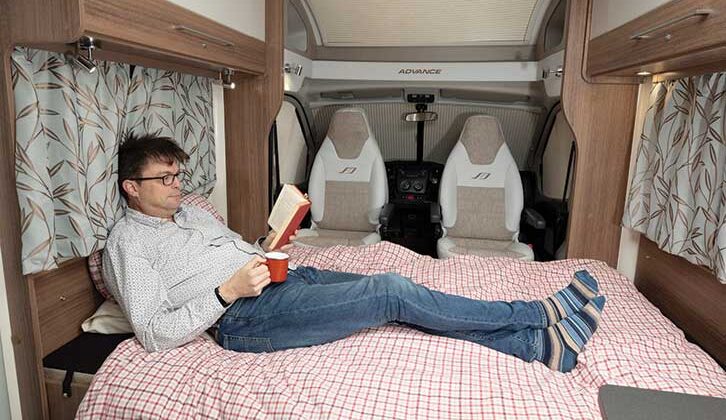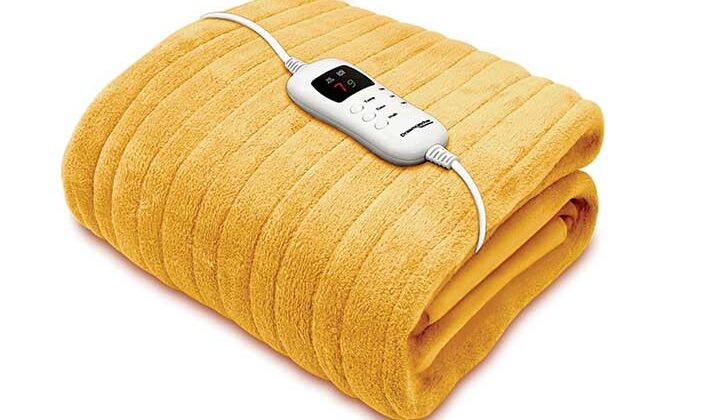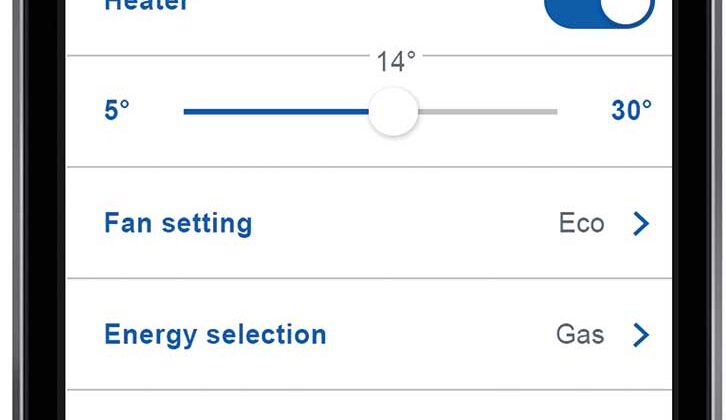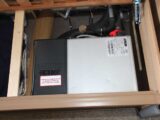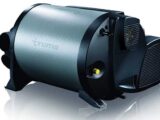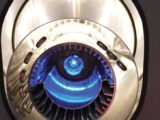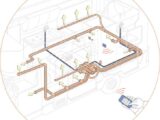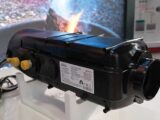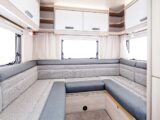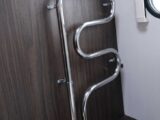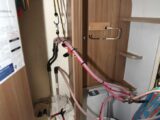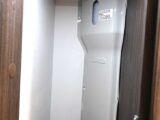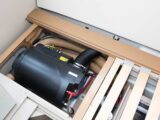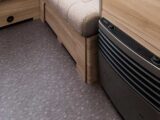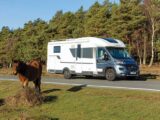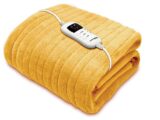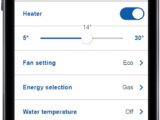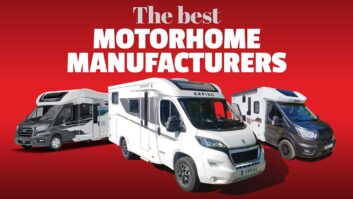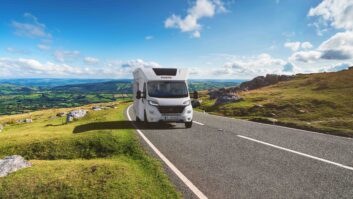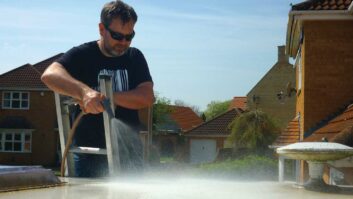Having a good motorhome heating system will be an essential part of an enjoyable touring experience.
Even if you’re staying at one of the best motorhome sites in the summer months, there can still be a chill in the air at times, prompting you to turn to your ‘van’s heating. Here, I’m answering some of the common questions you may have about the heating systems we find in our motorhomes.
You can also take a look at our best heater for a campervan guide, where we share our top picks on the market to keep you warm.
1 Are motorhome heating systems effective?
A properly maintained motorhome heating system in a modern, well-insulated ‘van is very effective indeed.
It will not only heat the interior space quickly – typically reaching your target temperature in around 20-60 minutes – it will also be able to maintain that level of warmth extremely efficiently.
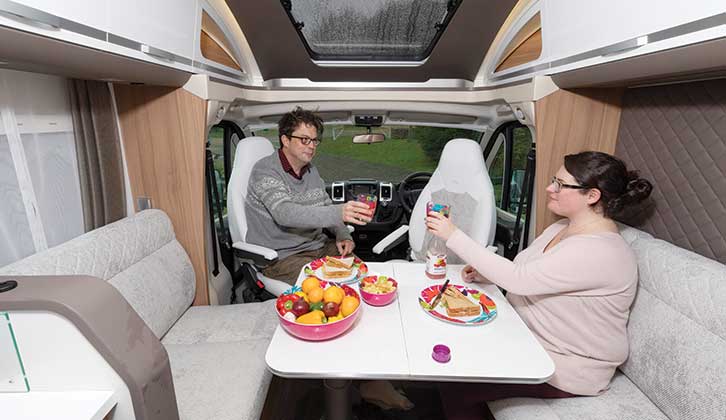
UK motorhomes are frequently tested in industrial-size cold chambers, which can generate temperatures below -20°C.
So a modern vehicle could keep you very warm, cosy and comfortable, even in those conditions. These days, they really are four-season leisure vehicles.
2 Are motorhomes fitted with separate heaters for hot water and space heating?
The majority of modern motorhome heating systems will heat both the interior space and the water in a single combi unit.
Clever engineering means that these combination heaters are small enough to fit underneath a settee in the living area, and are quiet, reliable and very efficient.
That said, you can actually purchase separate space and water heaters, although these are more commonly found fitted in campervans and small motorhomes.
3 How does motorhome space heating work?
Motorhome ‘central heating’ systems generally work in one of two ways: blown air or wet (radiator) heating.
The simplest systems are blown-air designs, which are basically large fan heaters that will distribute warm air throughout the motorhome’s interior, using a combination of flexible ducting and adjustable vents.
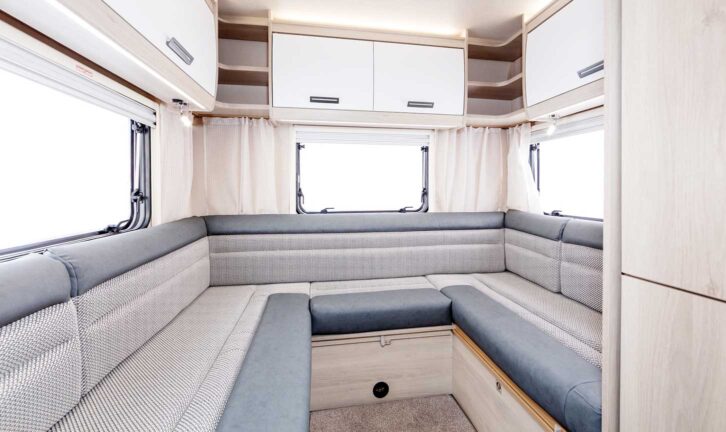
The other option is wet heating, which is like domestic central heating, in that it has a boiler, and radiators distributing the heat.
4 What do I need to know about blown-air heating?
The two biggest manufacturers in this sector in the UK are Truma and Whale. Truma makes combination heaters that warm the motorhome interior and heat your hot water, while
Whale manufactures separate water and space heaters, many of which can be mounted underneath your motorhome’s floor. The two Whale units are monitored and adjusted from a single control panel.
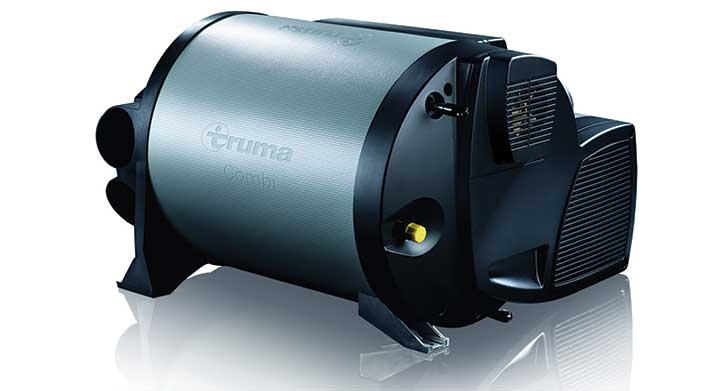
To heat the motorhome’s interior, air is warmed using either gas or electricity, or a combination of the two. The gas is burned in a central combustion chamber, and the heat from this passes into a series of heat-exchanger fins.
Ambient-temperature air is drawn in by a fan and passes over these fins, heating up as it does so. This can be boosted by electric heating elements in the airflow, or you can use electric heating alone.
Once it has been warmed, the hot air is blown out of the heater along ducting, which then transports it all around the motorhome.
The heating is thermostatically controlled. It will cut off once the target temperature in the vehicle has been reached, and kick in to boost the temperature as and when necessary.
5 So how is wet radiator heating different?
The boiler part of the wet system is not dissimilar, but it uses heating fluid instead of air to distribute the heat around the motorhome, just like many home central heating systems.
This fluid circulates around the system, passing over heat-exchanger fins. On each of these circuits, as the temperature is boosted, the heat in the ’van gradually builds up.
At various strategic points around the circuit, this heated fluid passes through a heated towel rail, radiator units hidden behind the furniture, panel radiators and sometimes an underfloor heating system. At each of these points, it radiates the heat to dry towels or warm the air.
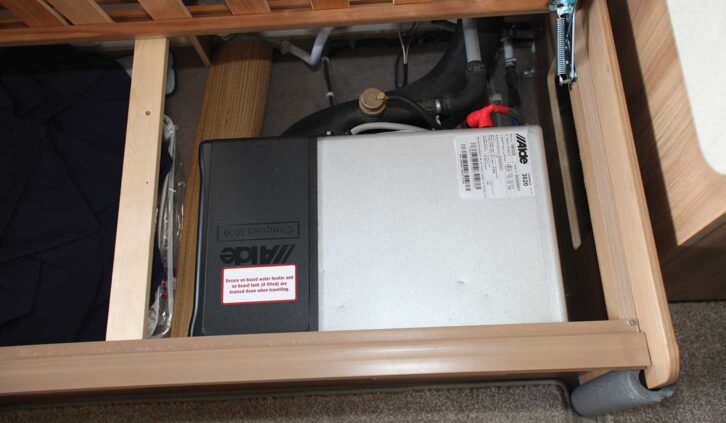
Alde wet boilers also vary in that they need a reservoir for their heating fluid. This container, usually located at the back of a wardrobe, normally contains a magenta-coloured liquid.
This G13 glycol antifreeze solution is the fluid that is heated and circulated through the pipes. These antifreeze properties ensure that it doesn’t have to be drained down in extremely cold weather, although it does need to be checked annually for strength and dilution, and changed every five years.
This fluid also contains inhibitors that will slow the degradation of the pipes and the internal surfaces in your ’van’s heating system.
Changing the system’s heating fluid is generally a job for the professionals, and will cost anything from £150 to £250, because it is quite involved.
However, experienced DIYers could attempt this task themselves, which brings the cost down to around £30 for the fluids, although it’s advisable to buy a pump, too.
A basic pump costs from £10 and can be found on eBay. Video tutorials on YouTube demonstrate the process.
6 Which is the best, blown-air or a wet radiator system?
Well, how long is a piece of string? Which of these systems would be best for you depends very much on your requirements, motorhome and family sizes, and of course, budget.
Alde wet heating is generally considered the more high-end option, and can be found in almost all luxury motorhomes.
Of course, maintenance costs are higher over the lifetime of a ’van, and there are more elements to go wrong.
There seems to be a consensus that Alde heating can deliver more uniform heat throughout a motorhome, and its operation is silent.
Another welcome benefit is that Alde’s Compact 3030 boiler has a two-zone system – so, for example, you could have the washroom warmer for towel drying purposes, and keep your bedroom cooler for sleeping.
Motorhomers in the Truma and Whale blown-air heating camp will rightly claim that it warms up a ’van more quickly, and deny that they get cold spots in their vehicle.
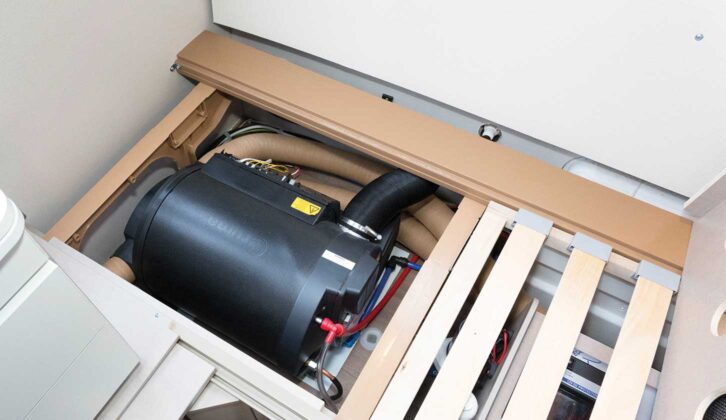
I have to say, I’ve never had an issue with cold spots in a motorhome, with either type of heating. In fact, I would say both systems are actually capable of making a motorhome uncomfortably hot within about an hour!
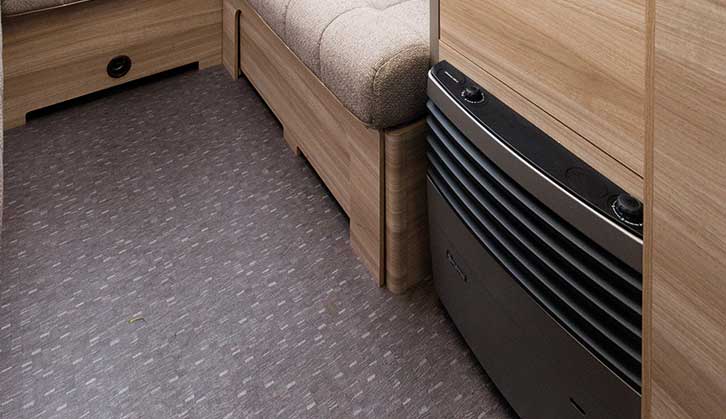
One slight downside with blown-air heating systems can be the noise of the fan, especially with older models. This is very much a background sound, but it can feel a little intrusive when you’re sleeping in the front lounge bed and the boiler’s directly below your head. Light sleepers might want to consider this when choosing a vehicle.
Most motorhome heaters tend to be combination boilers, so their water-heating capabilities should also be part of your decision-making process. This is generally expressed in litres and is the capacity of their hot-water cylinder.
Bear in mind that this capacity is boosted when it is mixed with cold water on leaving the boiler (to make it a safe temperature).
As an example, Alde’s 10-litre cylinder capacity is boosted to 17 litres with the addition of cold water, and might be enhanced by the settings of the user in the shower, to, I would estimate, 20-25 litres.
The boiler’s energy output should also be considered.
7 How much output am I going to need?
It depends on the size of your ’van and the number of occupants. If you’re in a 4 berth motorhome, assuming the vehicle is larger, and especially if everyone showers in the ’van (rather than at the site facilities), I’d always go for a 6kW system, such as Alde’s Compact 3030 (3.3-6.4kW), or Truma’s Combi 6 (which runs at 2kW, 4kW or 6kW).
In a motorhome for couples, or if you only use site facilities, a 4kW heater could suffice for both space and water heating. Of course, the systems can be set to several outputs to suit your particular heating needs.
8 Does the gas I use make any difference to the heating output?
Yes. Propane contains slightly less energy than butane. For example, the Alde 3030 generates 3.3kW on Setting One with propane, and 5.5kW on Setting Two. Meanwhile, with butane, it generates 3.8kW and 6.4kW respectively.
9 Which brands of motorhome heaters are the best?
In the UK motorhome market, there isn’t a great deal of choice. Typically, you’ll find that blown-air systems are made by Truma and Whale, while wet radiator systems come from Alde.
All offer space and water heating, and all are time-proven products.
10 Does a motorhome heating system require much in the way of regular maintenance?
In general, modern vehicle heating systems are very reliable, and I’ve heard of very few problems over the years. Occasionally, I’ve been told about the electronics failing and a new circuit board being needed, but a heater that is checked and maintained annually should give many years of reliable service.
Alde heating systems should have their fluid checked annually and replaced every three to five years, while all water heaters (not Alde radiator heating) should be drained down before putting your ’van into winter storage, to prevent the risk of potential damage from freezing.
If your Alde system makes any noise, it might need bleeding. You can find the instructions online, but first ensure the pump speed is set to 2-3 on the side of the unit, because your technician might have altered it for testing.
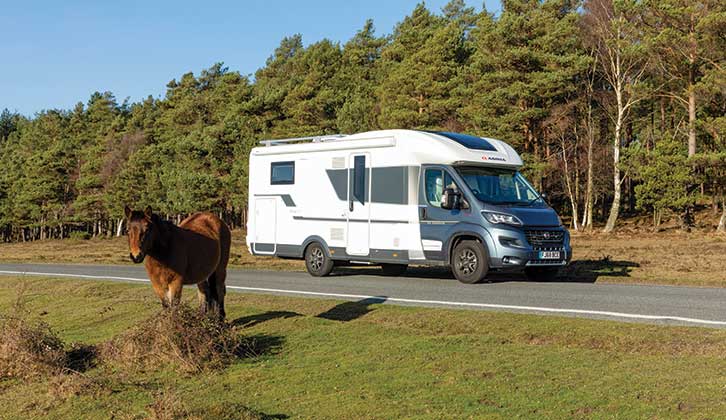
As part of the motorhome’s annual service, the technicians will test the exhaust gases emitted from the boiler.
When gas is burning efficiently, the flame is blue. Where the flame isn’t visible, they’ll carry out a flue-gas analysis test with a specialised meter.
This measures the emissions and will highlight if there are problems with the gas burning fully and whether the burner requires maintenance.
Likewise, they will check that the flue is clean, the gas pressure remains consistent, the electric and gas systems have been correctly earthed, and the orange (10 years) or black (five years) gas feed pipes are within recommended lifespans before replacement.
11 Are motorhome heaters expensive to service?
Heating systems are serviced as part of the annual motorhome maintenance regime, which will typically cost a few hundred pounds depending on the size and complexity of your vehicle, and whether you use a dealer, or go to an independent mobile technician.
12 What about underfloor motorhome heating systems?
Let’s start by clarifying that ‘underfloor heating’ (UFH) has two rather different meanings when we’re talking about leisure vehicles. First, several of the manufacturers, including Whale, produce compact heating units that are mounted on the underside of a motorhome or camper, literally under the floor, on the exterior.
This frees up more room inside the ’van and any noise is kept outside. These units are protected in robust, waterproof casings.
UFH as we know it in domestic terms also exists in some more upmarket motorhomes, having been championed by Alde. These systems warm the floor and the heat rises gently throughout the interior of the vehicle.
As Alde heating guru Neil Marsden explains: “Alde’s UFH is hydronic, like the rest of the system. The UFH pipe is 12mm PEX-AL-PEX with aluminium spreader plates and it’s plumbed into the main heating circuit, containing the antifreeze fluid. Alde tests have found it’s not possible to heat a leisure vehicle solely with UFH, because heat loss is far greater than in a building. The UFH would have to run at too high a temperature for comfort or health. So UFH is only ever supplemental to the main heat source.
“It’s a great luxury, though, being able to walk comfortably barefoot on your motorhome floor, regardless of the weather outside.
“This will also affect your body’s temperature regulation. When you have comfortable feet, the rest of your body doesn’t want as much heat, so you can set the system’s thermostat
a bit lower, saving energy.”
Electric UFH can be retrofitted to motorhomes by the experienced DIYer or a motorhome technician.
Ebeco Foil 48V is sold by the metre in various widths, and at a thickness of just 0.3mm, it can be laid under motorhome vinyl flooring.
This low-voltage system requires a transformer and is fused, with built-in protection against overheating.
13 Are motorhome heating systems safe to use while you are sleeping?
A properly maintained motorhome is perfectly safe to sleep in with the heating running. On campsite electric hook-up, the more cautious among you might prefer to only use electric heating, and we would, of course, always recommend fitting a carbon monoxide (CO) detector/alarm.
14 Which power supply is more economical, gas or electricity?
When on hook-up, I’d typically use the heating on an electric setting. While campsite electricity has increased in price in recent years, bottled gas has seen greater inflation and my most recent 13kg Calor refill cost more than £50.
15 Will my heating work off-grid?
Off-grid motorhomers rely on gas for almost all of their energy needs, including heating, cooking and refrigeration. Experienced wild campers tend to have two gas bottles on board, and top up their leisure battery with solar power, although this 12V power isn’t sufficient to run the heating.
Given the current cost of bottled gas, frequent off-gridders should consider using Safefill gas bottles or the Gaslow self-fill system, which you top up yourself with LPG at Autogas petrol stations. This costs around a third of the price of Calor gas.
16 What’s the ideal temperature for the thermostat in a motorhome?
Setting a motorhome thermostat somewhere between 18°C and 21°C creates a comfortable environment for most people. For those motorhomers who feel the cold, a heated throw is an excellent investment if you’re using a hook-up on site.
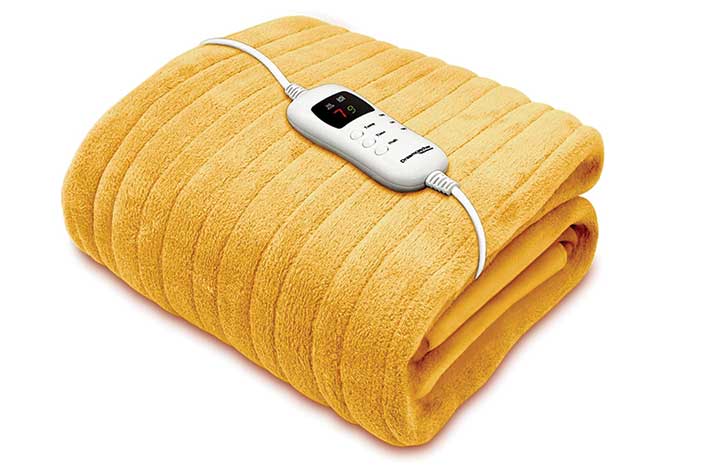
17 There are draughty air vents in the motorhome floor – can I block them?
These vents are gas drop-outs, which are designed to let heavier-than-air gas flow out of the motorhome in the event of a gas leak. They will also allow CO to escape, so the answer is no, they should never be blocked up.
It makes good sense to invest in a CO detector for your ’van, and if you smell gas on entering the vehicle, exit the ’van immediately, leaving the door open.
18 Can I use an extra heater in my awning?
Technically you can, unless you are on a campsite where these are banned. However, we’d strongly recommend not heating your awning (see: the best motorhome awnings), for obvious environmental reasons, so it might be worth investing in some thermal vests!
19 Are motorhome heating systems easy to control?
The latest vehicle heating systems are extremely easy and intuitive to control, typically via an LCD control panel close to the door.
Using buttons or touchscreens, you can choose between water and space heating, then select the power source and the level of output in kW.
On some Alde 3030 heaters, you can also set two-zone temperatures, while on blown-air systems, you can select the fan speed.
20 Why does the electric cut out sometimes when I switch on the ’van’s heating?
The most probable cause is that you’ve exceeded the electricity supply of the hook-up. This is displayed in amps, and is usually 10-16A in the UK, but could be as low as 6A if you are touring on the Continent.
With a 230V supply, a 10A supply gives you 2300W (2.3kW) to play with, while a 6A supply only allows you up to 1380W. So if you turn on your electric heating at 3kW on either supply, it will exceed the load and the hook-up circuit-breaker should trip.
Bear in mind, too, that your fridge might be using 125W, your lights 60W and your motorhome TV another 60W. So you can see that it all adds up.
21 Can I control my heating when I’m away from the motorhome?
Modern ’vans have integrated systems and appliances that can be controlled via a smartphone app –in theory, wherever you are in the world!
The heating, air conditioning, lighting, battery level and security can often be monitored and controlled from afar, using systems such as Truma’s iNet X, Whale’s iVan and Alde’s Smart Control.
The final word on motorhome heating systems
Motorhome heating systems have become extremely efficient and sophisticated in recent years, as vehicle manufacturers have embraced the use of new materials, new technologies and the digital revolution.
Choose wisely, and you can be sure of always coming back to a warm motorhome and a hot shower, wherever and whenever you might tour.
If you’ve enjoyed reading this article, why not get the latest news, reviews and features delivered direct to your door or inbox every month. Take advantage of our brilliant Practical Motorhome magazine SUBSCRIBERS’ OFFER and SIGN UP TO OUR NEWSLETTER for regular weekly updates on all things motorhome related.
